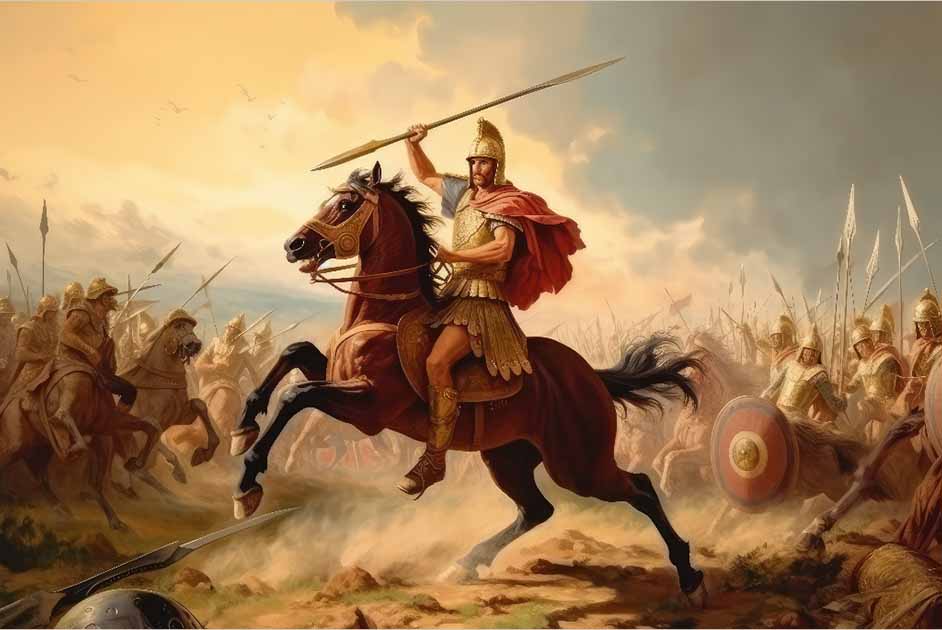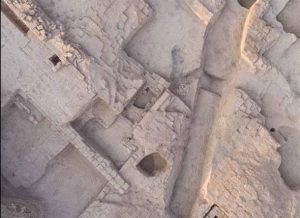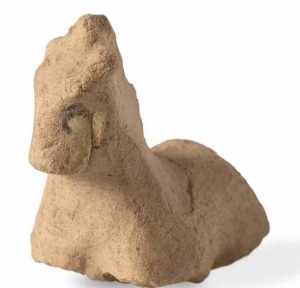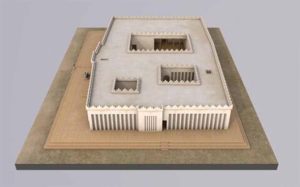Claiming to be divine, Alexander the Great was discovered in Iraq

One of the last acts by Alexander the Great before dying at the tender age of 32 might have been dedicating a Greek temple to honor ancient gods and confirm his own divine status. This is according to archaeologists from the British Museum working in the ancient city of Girsu in southern Iraq who have unearthed a 4,000-year-old Sumerian temple. The later Greek inscriptions, extremely cryptic and tough to gauge, had made no sense to the archaeology team, until now.
Ancient City of Girsu Remembered
Girsu, also known as Tiris, was an ancient Sumerian city located in southern Mesopotamia, in what is now modern-day Iraq. The city flourished during the Early Dynastic and Ur III periods of Sumerian history, roughly between the 26th and 21st centuries BC. Girsu was a significant city of the Sumerian civilization, the first in the world, and played a crucial role in the development of early Mesopotamian culture.
The unearthing of the temple indicates that individuals living during Alexander’s time possessed awareness of the site’s ancient history. This abandoned site, dormant for millennia, hints at the existence of accurate historical knowledge and cultural memory within ancient societies, which have traditionally been seen as ‘primitive’.

The temple fell into abandonment around 1750 BC, more than a millennium prior to Alexander the Great’s birth, indicating a profound and precise historical awareness within these ancient civilizations. (© British Museum)
“It is truly mind-blowing. Our discoveries place the later temple in Alexander’s lifetime. We found offerings, the kinds of offerings that would be given after a battle, figures of soldiers and cavalrymen. There is a chance – we will never know for certain – that he might have come here, when he returned to Babylon, just before he died.”
After excavations commenced in the 19th century, speculation arose about the presence of a Greek structure at the site, brought about by the discovery of a perplexing tablet. The tablet, inscribed in both Greek and Aramaic, bore the inscription ‘ Adad-nadin-aḫḫe,’ translating to ‘giver of the two brothers’.
Researchers were intrigued by the temporal dissonance: the temple had fallen into abandonment around 1750 BC, over a thousand years prior to the birth of the Macedonian, Alexander. Dr. Rey proposes that the Greeks, including possibly followers of Alexander, established their own temple on the ancient grounds to possibly assert the divinity of Alexander.

The British Museum expedition, among their many discoveries, found a silver drachma coin, minted by Alexander’s forces in the 330s BC. This timeframe aligned with the lifetime of Alexander the Great and coincides with the period immediately following his victory over the Persians who previously held dominion over the region, reports The Daily Mail.
This discovery strengthens the hypothesis that the Greeks, possibly under Alexander’s influence, indeed established a temple on the ancient site. In the wake of their conquests, the Greeks left lasting imprints on the region, including the construction of religious structures to commemorate their leader’s triumphs.
Sumerian Anti-Armageddon Device 4,000 Years Older Than Believed
Ram in a Thicket: A Mesopotamian Legacy from the Ancient City of Ur
Alexander the Great’s Temple With Votive Offerings: Links To Hercules and Ningirsu
An altar with offerings generally found at Greek temples, also included terracotta cavalrymen which were very similar to the ‘Companion Cavalry’ which formed the personal bodyguard of the young conqueror, another direct link to Alexander.
Artifacts, like this terracotta horse found among offerings at Alexander the Great’s temple, suggest the worshippers may have been part of Alexander the Great’s ‘Companion Cavalry’ bodyguard or even included Alexander himself. (© British Museum)
Dr. Rey added that Alexander’s fascination with mythical strongmen, particularly Hercules, may have led him to seek a Sumerian equivalent. Identifying Ningirsu, a figure with parallels to Hercules and associated with the completion of Twelve Labors, Alexander likely embraced a connection with this fused Greek and Sumerian deity. By declaring himself the Son of Zeus in Egypt, he positioned himself as the brother of Hercules and, potentially, Ningirsu.
In this context, the enigmatic inscription “giver of the two brothers” is interpreted by Dr. Rey as a reference to Zeus, the purported father of Alexander and Hercules, as the bestower of these two iconic figures, reports The Greek Reporter. The belief is that Alexander, inquiring about the equivalent of Hercules in Mesopotamia, could have been directed to Girsu as the home of Ningirsu, leading him to establish a sacred site in honor of this newfound connection.

A reconstruction of the Hellenistic Temple of Heracles Ningirsu in ancient Iraq. (© British Museum)
The recognition of Girsu as the dwelling place of the god is an indicator of a profound cultural memory among the local populace. The later Hellenistic temple built atop the ancient site might have been established during Alexander’s return from his Indian campaign, just before his death in 323 BC.
This chronologically aligns with the idea that Alexander, influenced by his quest to link Greek and Sumerian mythologies, sought to leave a lasting mark on the region by constructing a temple dedicated to his perceived divine lineage.
“This site honors Zeus and two divine sons. The sons are Heracles and Alexander. That is what these discoveries suggest,” concluded Dr. Rey.